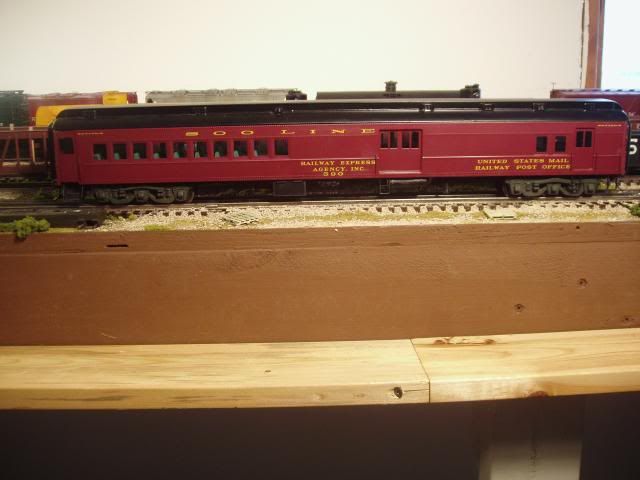quote:
While a few different turnouts may allow scale wheels to physically function over them, I personally don't know of any that do so in a way that meets my standards. I don't like seeing a wheel dip into the frog before being picked back up even though it may stay on track and not derail. I also don't like any switches that will do it but with the caveat that you not try to back up over it.
Fred and I are of a similar opinion on this issue. As I see it, one of the great strengths of 3 rail scale is operational reliability and the potential for realistic operation. Anytime you intentionally mismatch wheels and track you are undermining the reliability of your railroad.
We have yet to have a derailment at a switch during an NWTL operating session. And we have even run some Atlas and MTH 2 rail freight cars in operating sessions. But those two rail cars were deliberately placed near the tail end of a train and were not switched by either road or yard crews. They just had to travel forward and wouldn't have see significant lateral forces even if they had to make an unplanned reverse move.
With that said, operations of 2 rail cars on the three rail track of the Northwest Trunk Lines have met with a with fair degree of success. But they are noticeably more prone to derail than 3 rail cars, especiall on reverse moves. The NWTL has Scaltrax O-72, #4 and #6 switches along with ten handlaid switches that I built to Ross #6 curved and #8 curved switch patters using Scaltrax rail and Ross frogs. I have a high regard for the shape of both Scaltrax and Ross frogs. Both offer excellent results with the three rail trains for which they were designed.
If you look at Rich Battista's diesels you will notice that most of them have 3 axle trucks. Three axle two rail trucks on locomotives or heavyweight passenger cars do much better on 3 rail switches than 2 axle trucks due to the fact that two axles remain supported while one passes over the frog. That reduces or eliminates the dipping. But you still have 2 potential problems if you are running 2 rail wheel sets. First, you lose traction tires on diesel locomotives. With 3% grades your locomotive tonnage ratings may get unrealistically small. If your freight car fleet contains many Atlas Master Line cars it will exacerbate the problem since they tend to be on the heavy side. What is your standard train/siding length? Second, 2 rail wheel sets are insulated so you lose the advantage of 3 rails easy track detection if your railroad will be signaled.
Give your Ferdinand Magellan a try. You might find that those 3 axle trucks do pretty well.






